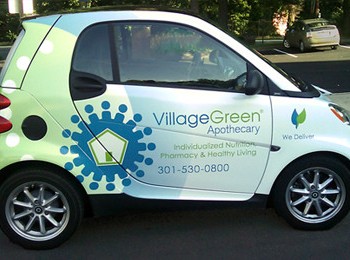For years we’ve been warned to stay out of the sun and to wear sunscreen anytime we are in the sun. ow new evidence shows that we’ve been getting some bad advice. There are some caveats to sun exposure and to sunscreen and we need to clear up all of the misinformation we’ve been getting for years.
What are the Short-Term and Long Term Consequences of Sunburn?
The most obvious is that burning sensation that makes it very uncomfortable when you get a burn. You feel hot, you may get dizzy and feel lightheaded and tired.
Sunburn is caused by the sun’s ultraviolet radiation from the UVA and UVB exposure. It causes free radicals, which lead to inflammation, aging of skin, and damage that can cause cancer.
So with this knowledge we should know to take precaution during noon and mid-day when the sun’s rays are the most intense. Quick strategies include:
- Avoid being in the sun during these peak intense hours, if possible
- Seek shade or create shade, if possible
- Wear a hat
- Use a natural sunscreen without vitamin A (more on that in a minute)
But Don’t Ditch the Sun!
New studies suggest that avoiding the sun is unhealthy and can lead to numerous chronic conditions.
Because the average person is indoors 90% of the time, they don’t get enough vitamin D3, nature’s vitamin that we absorb from the sun’s UVB rays. Vitamin D3 is essential for a healthy immune system, it helps us absorb calcium, which builds strong bones. It also blocks the release of parathyroid hormone, which makes bones brittle or thin. A vitamin D3 deficiency can lead to poor immunity, more colds, depression, brittle bones, osteoporosis, and there are many links to breast and colon cancer (see the Cleveland Clinic Vitamin D3 info).
The key is to get sun exposure during the morning or late afternoon when the UV rays are less intense. Limit the exposure to 15 minutes while moving or during an activity (not laying directly in the sun).
Use a SAFE natural sunscreen (see EWG’s recommended products…click here)
The Dangers of Sunscreen
- Vitamin A in Sunscreen Speed Development of Skin Tumors
Make sure your sunscreen or lip moisturizer doesn’t have Retinyl Palmitate, a form of vitamin A. Studies in Norway and Germany caution that this ingredient speeds the development of skin tumors when exposed to the sun (NTP 2012).
- Vitamin A Can Cause Toxicity
Further studies show that the daily use of skin products with vitamin A can contribute to a vitamin A toxicity.
- Don’t Be Fooled by the SPF Factor
We’re led to believe that a SPF of 60 will provide 60x the protection or SPF 80 would lead to 80x the sun protection. While a higher SPF provides a higher protection, it’s not linear.
Don’t be fooled thinking that a high SPF means you can lie in the sun all day and expose yourself to more harmful radiation. Your skin is still being heated by the sun, you sweat, which decreases the effectiveness of the sun screen and while a higher SPF provides greater protection, taking precaution during peak UVB times is still the best course of action (seek shade, put a light shirt on, wear a hat).
- Many Sunscreens Contain Harmful Ingredients These ingredients can become harmful to us when absorbed into the skin. (See EWG’s full report on sunscreens).
- Be Careful Using Spray Sunscreen studies show their dangers when inhaled and it’s difficult to get good coverage on the skin, meanwhile applying by hand can provide more protection.
The Benefits of Nutrients to Help Protect Your Skin
Many are unaware that there are certain nutrients that are very beneficial to the skin and help protect us from free radical damage:
1). Omega 3 Fish Oil is at the top of the list. The UV rays create inflammation in the skin, this nutrient provides a natural defense to stop that inflammation.
In a 2013 study, fish oil consumption by volunteers boosted their immunity to the damages of sunlight (Pilkington SM et al. 2013).
In another study, “There is strong circumstantial evidence from both experimental and clinical studies to support a role for omega-3 FA [fatty acids] in the prevention of non-melanoma skin cancer.” (Black HS, Rhodes LE 2006).
2). Vegetables and Fruits
Sun exposure causes damaging free radicals in the body. The carotene and carotenoids which provide the color in fruits and vegetables, help neutralize free radical damage. Studies show that there is less redness in skin when exposed to the sun of those who ate a higher percentage of fruits and vegetables. So do as grandma always used to say, “Eat your fruits and vegetables!”
3). Eat Chocolate – Dark Chocolate That is
The antioxidant called flavan-3-ols which is found in green tea and dark chocolate have been found to reduce the sun’s damaging UV rays. One study performed in the UK found that after 12 weeks their control group who consumed chocolate had 2x the UV protection than the group who didn’t consume chocolate. So start working out and building your UV protection for the summer by eating dark chocolate and drinking green tea!
Best Tips for Your Best Health
- During the Summer, Get Sun Exposure: in the early morning or late day when the sun is lower in the sky and UV rays aren’t as intense. It’s healthy for you and you need the vitamin D3. During the winter, especially in northern states, just taking a 15-minute walk can help you absorb some vitamin D3, make sure you get enough outside time. Also, vitamin D3 supplementation during the winter months is a must for most people (unless you’re in the tropics). Dr. Ivker recommends a minimum of 5,000 IU’s a day.
- Eat Dark Chocolate and Green Tea
- Eat Your Fruits and Vegetables. Use the Harvard Food Plate. 50% of the plate should be covered by fruits and vegetables at every meal.
- Take a High Quality Fish Oil Supplement click here>>
(In addition, eat salmon a few times a week, add flaxseed oil to your smoothies, cereal and soups for extra Omega 3s!)
- Wear Clothes to Protect Yourself: Shirts, hats, pants, shorts, protect yourself from the ultraviolet rays.
- Make Shade During Peak Sun Time: If you’re on a beach, bring a beach umbrella to periodically use, especially during the high-noon intense hours. Especially protect your children and make sure that they take breaks from their play to get out of the sun.
- Your Future’s So Bright, Gotta Wear Shades: Just like the Dire Straits’ song, you have to wear shades. Protect your eyes from UV radiation. They’ll thank you as you age.
- Sunscreens Made with Titanium Dioxide or Zinc Oxide Provide Good Protection:
- There are few health concerns and they provide good protection
- They provide good UVA protection
- They don’t break down in the sun
Use only Natural Sunscreens Approved by EWG click here>>






Leave a Reply